Atlas Alpha One
Lantern acquired in July 2025.
This lantern was installed opposite Canal House, on the corner of Lisle and Grange Streets in Loughborough, Leicestershire, and was attached to the side of No. 23 Grange Street; numbers 25 - 27 having been demolished many years earlier. When pictured in May 2025, the lantern was already in very poor condition, but given that Thorn versions of the Alpha 1 were, themselves, a rarity by then, I decided to save it, if only to see how the Atlas versions differed. After receiving written permission to remove the lantern from both a representative at Canal House, as well as the resident of No. 23 (for both of which, I am highly grateful), I paid several weekend visits over, armed with tools and a ladder, only for residents' parked cars to hamper my efforts every time. I then hatched an alternative plan - I would visit at just before 5pm on a Friday evening, when I expected that office workers within Canal House would be leaving, and occupy the spaces immediately after they became vacant. This plan worked seamlessly, and I was able to complete the removal in less than an hour, without any drama, and more importantly, without any injuries (to me) or further damage (to the lantern) sustained.
The lantern was installed at a relatively low height (this being limited by the available height of No. 23's wall), and was wired in Mineral Insulated Copper Clad (MICC) cable - this is known colloquially as Pyro in the electrical industry. The cable passed underground, beneath the car park surface, emerging slightly further up, and entered the Canal House building at a low level. Although likely to be disconnected within the building (as various alterations were undertaken when the Synergy Logistics / Perfecto UK building was converted to the present Canal House), as I was not able to verify this, I used the old adage of treating the cable as live until proven otherwise.
I started by removing the lamp, taking it down the ladder to the safety of the ground, and moving it out of the way from the immediate area where I was working. Although the three grub screws securing the lantern to the bracket were seized (unsurprisingly), I was able to loosen and remove the four bolts holding the bracket to the wall with very little effort. With the bolts removed, I left the MICC cable supporting the bracket briefly - it was rigid enough to keep the bracket relatively horizontal. I then pulled on the bracket to make it face downwards, bending the cable in the process. Taking the weight of the bracket in my right hand, I proceeded to cut the cable with a pair of cable shears in my left. Descending the ladder very carefully, with the bracket now resting on my shoulder, I reached terra firma once more, and placed my new acquisition with the Opticell overhanging the shallow kerb, to avoid the extremely fragile acrylic from cracking any further. My final task was to wrap lengths of insulation tape around the top of the length of cable on the wall, just in case it was ever re-energised accidentally in the future.
After all that, here is the lantern once I had brought it home. Unlike the later Thorn Alpha 1s, the earlier Atlas examples (which presumably, includes all types made from the original 1955 versions to those of the mid-1960s) do not feature a clip attached to the underside of the Opticell that locks into the underside of the rear casting to hold everything in place in normal circumstances; instead, a thumbscrew passes through the casting, and attaches to the inner casting that serves as a sealing plug at the open end of the Opticell. In the case of this example, the thumbscrew had been lost over time, leading to a bolt that used the same thread being used as a substitute. This too was jammed, although I was able to rotate the top section very gently and slowly using a set of Stillsons (a pipe wrench), which caused the bolt to shear eventually, allowing me to separate the Opticell from the casting. This bolt is visible beneath the casting; the other four bolts are those that secured the bracket's back plate to the wall.
With the lamp removed, the rather truncated lantern is more obvious. Annoyingly, even in 2022, the Opticell still looked relatively intact, according to Google Street View imagery. Whatever impact caused so much of the Opticell to be lost (whether it be vandalism, or collision with a high-sided vehicle) did well to avoid smashing the lamp in the process.
"ATLAS OPTICELL" is moulded into a clear portion of the remaining acrylic. Although Thorn continued to refer to the plastic part of the Alpha 1 as an Opticell, the word was omitted from later (i.e. non-Atlas) versions of the lantern.
Thorn refined the rear casting too - whereas the internal fixing brackets for the Opticell are separate pieces that had to be attached to the inside of the casting on the Atlas version using slotted screws, later, they became part of the casting, before the upper brackets returned to being separated pieces in 1980s' versions of the lantern, although pop rivets located on top of the casting were then used to hold these in place. The two lugs protruding from the underside of the Atlas casting were removed in Thorn examples, although these castings gained the recess to store the Opticell toggle clip.
Very little rust exists on the threads of the four 1/2 inch wall bracket fixing bolts, although the heads were quite heavily corroded.
The missing front end to the Opticell allows this view to be captured - a brass lampholder is employed here, unlike the porcelain ones employed on later incarnations (and most other low pressure sodium lanterns). The aluminium canopy plug is deeper, and features a flat top to an otherwise circular casting.
The remains of the Opticell's top section are particularly brittle, with numerous cracks being visible in the small section that remains. It (almost) looks as if a hammer was used to break the acrylic, judging by how the plastic here has broken.
The thumbscrew hole in the underside of the casting is visible here. The most frontal part of the Opticell's underside (already cracked, probably from having the lamp resting on it) had to be glued back into place after I had cleaned the plastic in warm soapy water.
Separating the Opticell from the rear casting proved slightly more fiddly than it is on the Thorn version, but once the two were apart, I realised that the lantern couldn't have worked for a long time - a length of rubber flexible cable serves as an umbilical cord between the casting and the Opticell; however, where the inner cores were exposed to the atmosphere, the insulation has cracked and detached, exposing the inner tinned copper conductors.
The sheared securing bolt can be seen underneath this casting. Interestingly, the Opticell's lower fixing prongs are surrounded by a shaped length of rigid wire that serves no apparent purpose on this Alpha 1, but is exactly the same type as that used to connect the toggle catch on later models (except that these are positioned the other way around). This may, therefore, be one of the final examples produced to the 'old' design, with this wire added unnecessarily by an operative who was used to assembling the original lanterns.
The casting itself is an altogether more substantial fitting than what would be used on subsequent Alpha 1 versions.
The lampholder wires pass through a small hole in the rear of the casting. Similar to the contemporary, original Alpha 3, a ventilation hole is provided into the sealed area as a means of reducing condensation caused through lamp heating and cooling cycles. Ironically, the toggle clip-based mechanism employed to hold this Alpha 3 version together would not be carried on with subsequent versions, but the principle would be used on the Alpha 1 instead.
Looking into the rear casting itself, the Opticell locating hooks are somewhat larger than they are on Thorn versions. A chunky porcelain terminal block connects the incoming supply cables with the flexible cable to the lampholder; again, the insulation has all but perished from the exposed cores. Oddly, the clamp for the flex isn't used, although the cable could have been released from the clamp during installation, if terminating the MICC cable was found to be easier with the screws holding the terminal block in place were removed temporarily. Unlike in the Thorn versions, there is no provision for clamping the incoming supply cable in place.
The earth bond for the rear casting connects to one of the upper Opticell support hooks.
The lamp that came with the lantern is a Philips product, although it carries Cryselco branding. While Cryselco did have their own lamp factory (at the Kempston Works in Bedford), this was for incandescent (GLS) lamps, and discharge lamps would have been sourced from other manufacturers. The choice to use Philips is not surprising, as the Cryselco lamp company was already in equal joint ownership by Philips and the General Electric Company (GEC), following a takeover in 1927.
The franking is still perfectly legible, including the date code '1H', which suggests that the lamp was produced in August 1971. As Thorn was still using Atlas branding for its luminaire division at the time, this could be the lantern's original lamp; however, as the later toggle-based securing system for the Opticell was described in contemporary 1960s' catalogues, the lantern is likely to be somewhat older than the lamp. The date code does still indicate that the lantern had been abandoned for a very long time, given the 54 years between the lamp being manufactured, and the lantern being removed. Sadly, despite the lamp's barium getter still appearing to be intact, when connected up to 90 Watt control gear, the arc tube does not glow at all.
After the lantern's remaining parts received a surface cleaning, the bracket was re-installed; albeit, indoors this time.
I fashioned a makeshift lamp support using a length of solid core 2.5 mm2 cable and cable ties. The effect of this is two-fold: not only does this reduce strain on the lampholder and lowest remaining piece of acrylic in the Opticell; it also is tight enough to hold the lamp steady, should it detach from the lampholder.
The merits of my lantern are discussed in the video below:
Thanks to fellow collector Claire Pendrous for sending me pictures of her (far more intact) Atlas Alpha 1; Claire commented, "As you might know, I do have one of these, an ex Notts example, but is made up of two lanterns. From memory, the Atlas opticell will not fit the later Thorn A1í housings and vice-versa? That would need to be rechecked, but Iím fairly certain. The screw that would have held the opticell in place is made from Tufnol...I had a new one made in steel as the thread end broke off the original."
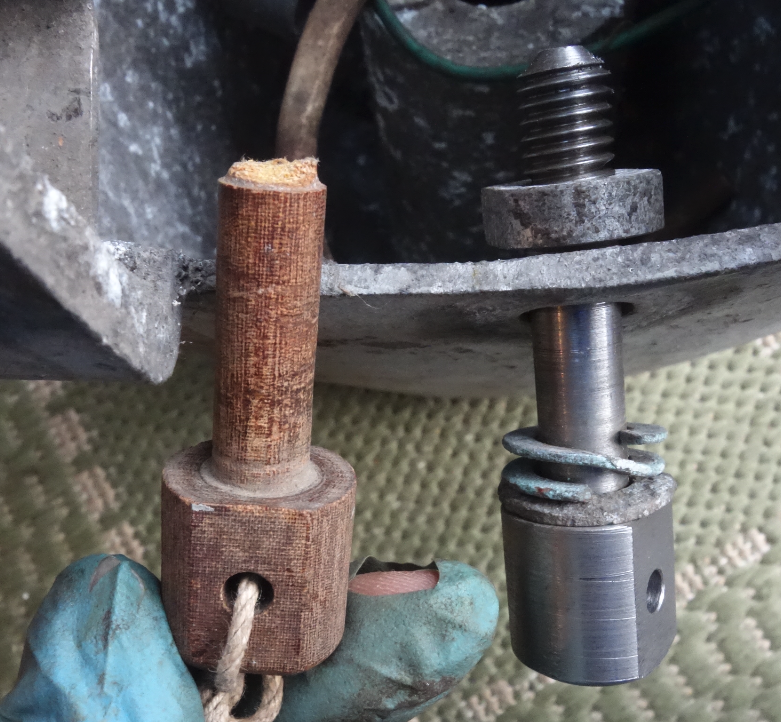
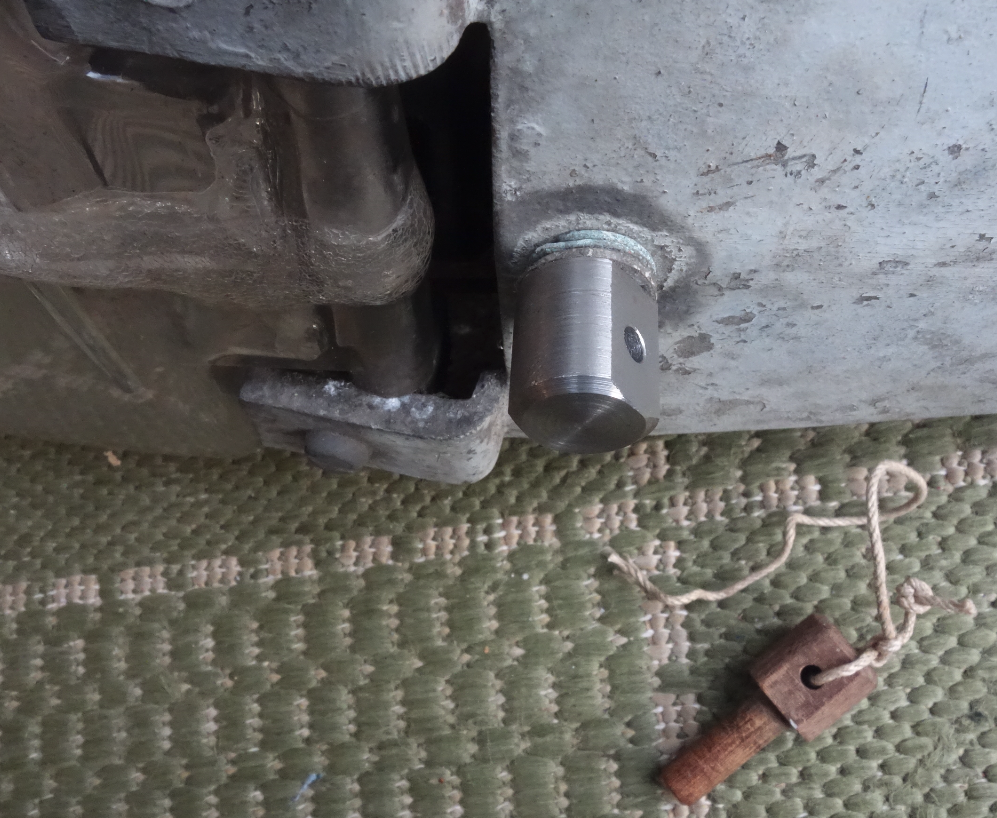
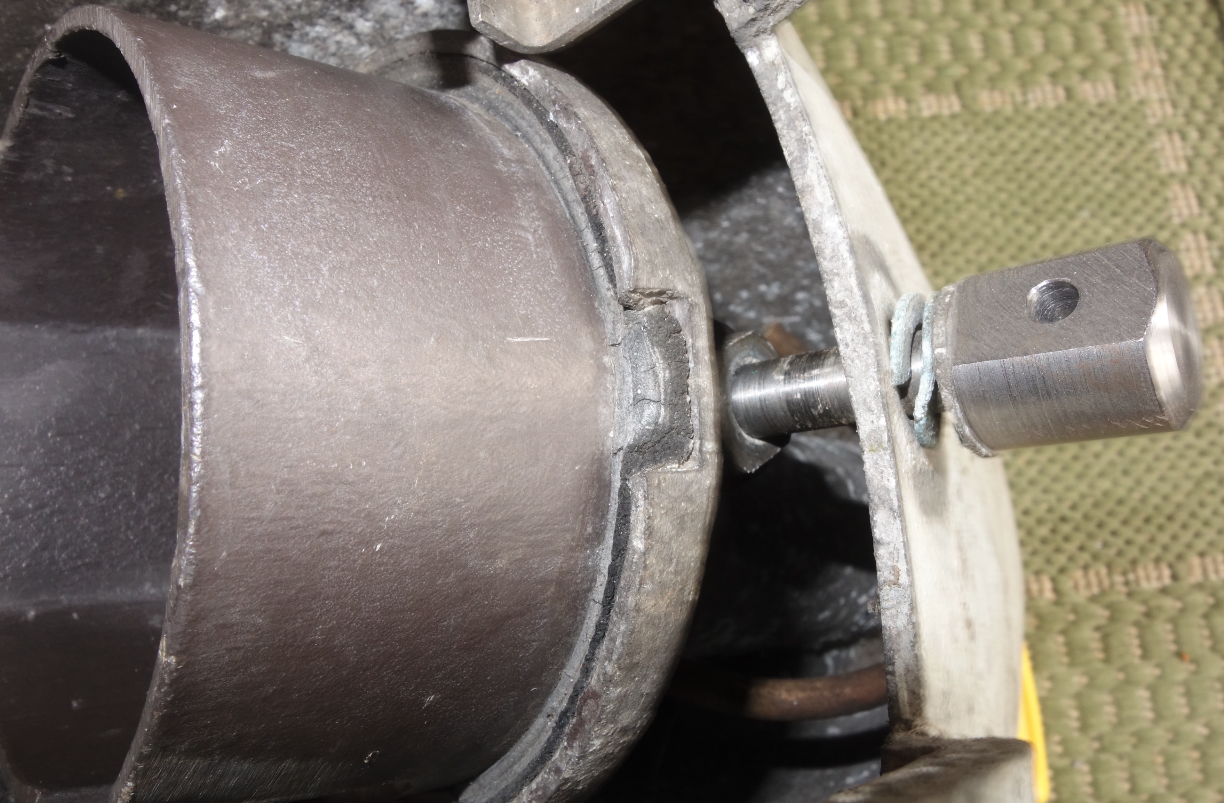
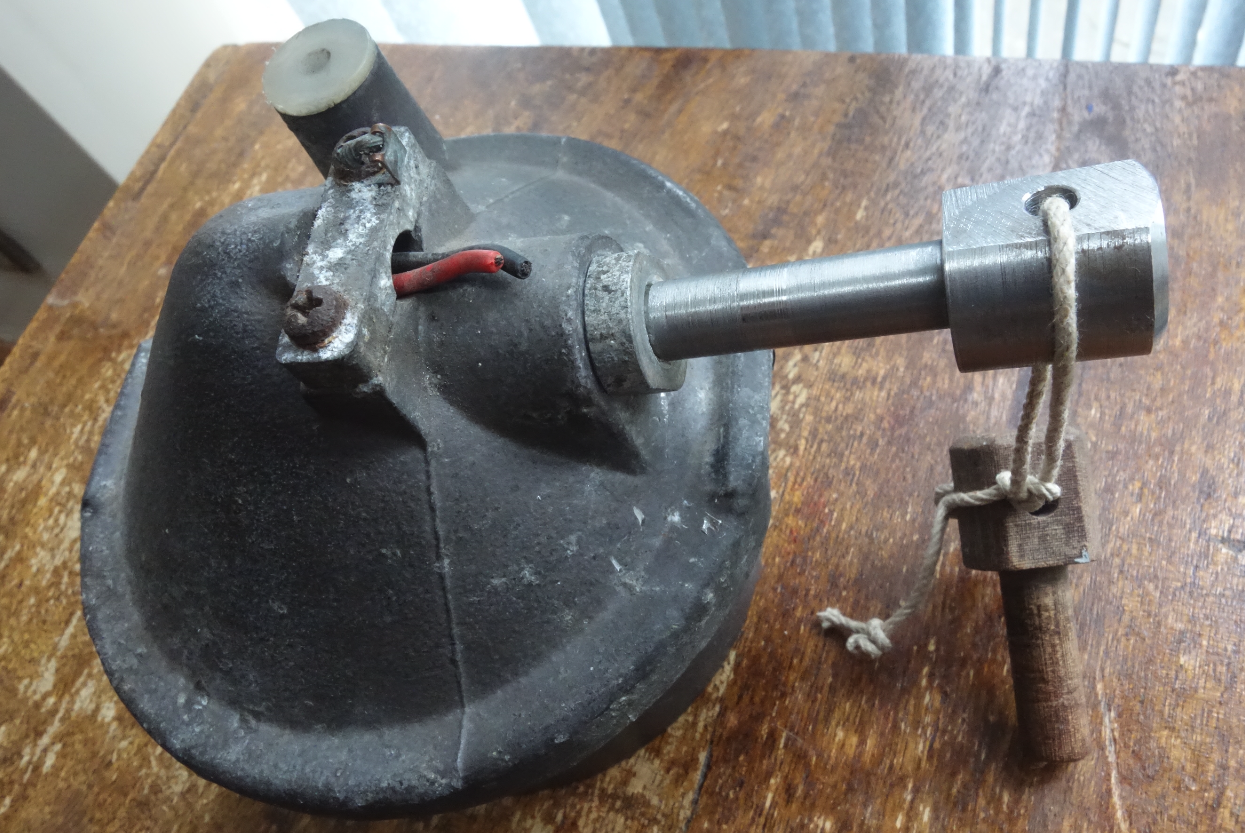
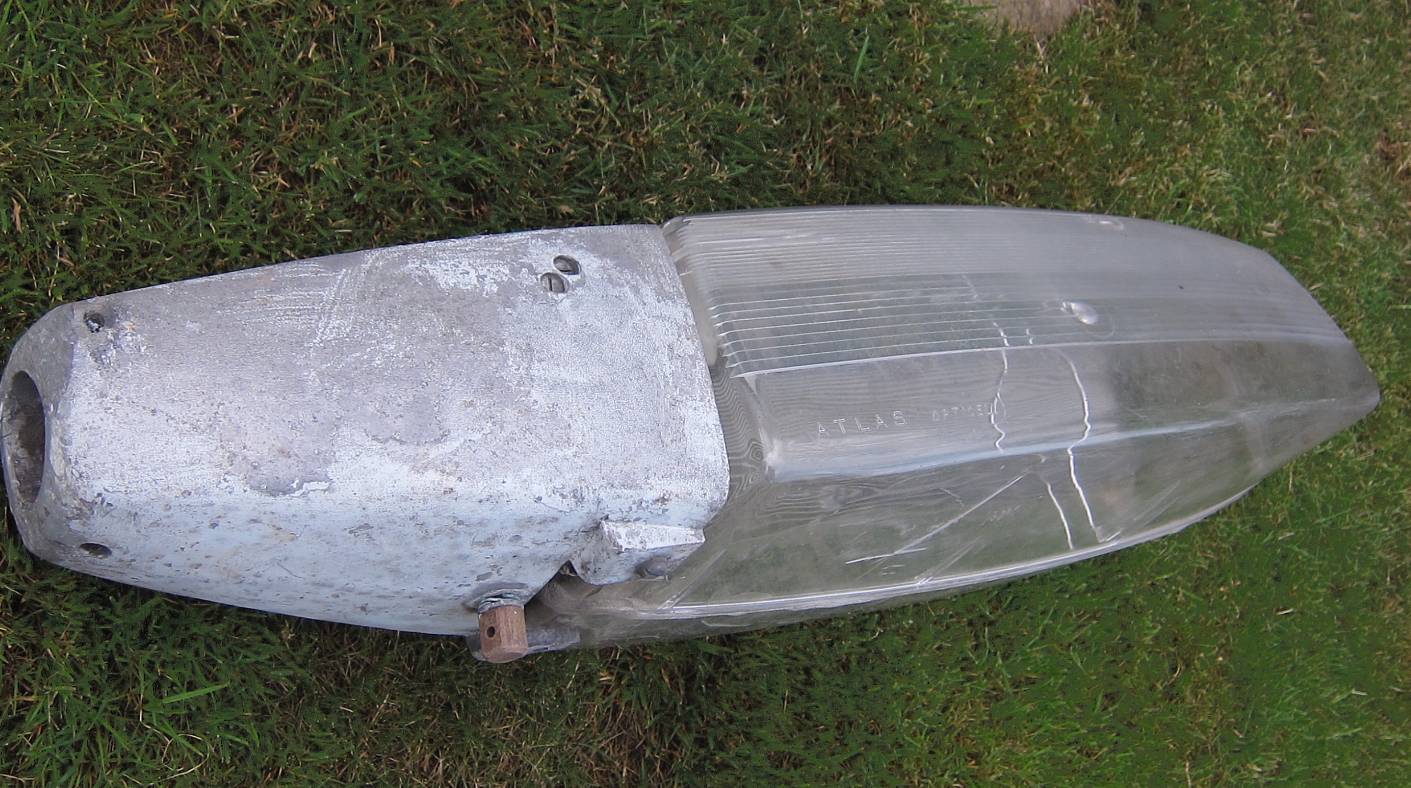
| Atlas / Thorn Alpha 1 Lanterns in the Collection | ||
|
|
 |
|
| Atlas (1960s) | Thorn (1970s) | Thorn EMI (1980s) |
CLICK HERE TO MAKE A MONETARY DONATION
© 2002 - English Street Lights Online